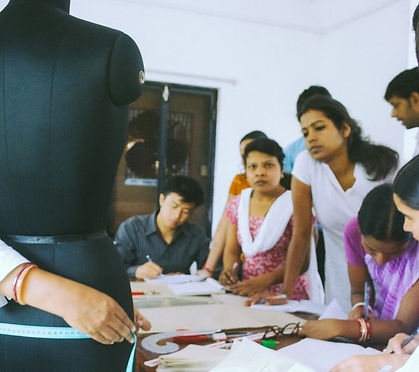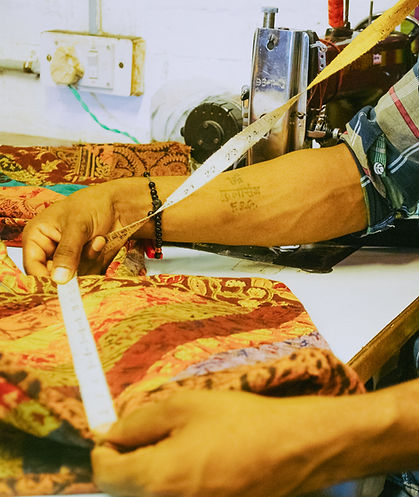



Design Philosophy:
Kumbaya's design principles derive from being rooted in a remote, rural, backward region – no skills, no raw materials, no roads, no transport, no electricity, no buildings, no markets, no money, no traditional craft, no way out for poor women. Overcoming these taught us how to look at problems and solve them – only after walking into walls, creating chaos, tripping over our own mistakes, of course, which finally led to practical innovation. And none of this would have meant a thing without the unexpected windfalls - times when pieces effortlessly fell into place, a streak of luck, a benefactor at our doorstep at just the right time.
For us, design means many things. Not just the way the product looks. It means the work that makes it, the work that it will do, who will work on it and who will it work for. It means the construction, materials, prices, communication, the whole complex process that makes the product appeal the way it does. It means fair practices, particularly in India, where multitudes of skilled craftspeople earn less than a minimum wage while designers earn the premium for using their skill.
From trial and error, practice and prototype, the design principles come down to -
-
Design with minimum means to get maximum impact
-
Design compassionately so that women can stitch perfectly within the shortest possible time
-
Design responsibly to reduce tedium while enhancing skills and capabilities
-
Design to minimize risk - between the sample, the stencil, cutting, joining, finishing and packing
-
Design classics, products that are always liked and used, even years later
-
Design with simplicity, uncluttered form shorn of excess
-
Design with naturalness, following the curve of the body, the drape of fabric, the line of the stitch
-
Design so that prices are affordable for as many people as possible
-
Design with waste till there is none
These are some of the principles behind the successful range of marketable products that are easy for the women to make, provide them with high wages, are reasonably priced and are constantly in demand. We make simple, well cut garments of good quality fabric and we do patchwork. Patchwork is easy to do but gives the effect of beautiful intricacy, adding high value to very small quantities of cloth. Machine stitched patchwork enables women to earn more in less time. And it uses up all the waste cloth generated from garment production.
The Design Process:
The process of arriving at the final design is by making samples or prototypes, again and again if required till it fits perfectly, washes well, fall gracefully, looks good, is easy to use and most of all, can be impeccably executed by the producer. From the sloper, a sample of one size is made, washed, and fitted on standard body forms and live models (people working at SPS) before a paper pattern is finalized. This chain of activities is repeated on all sizes. Then, a small test production run is done at the centers. The paper patterns are readjusted, tested again and perfected before the design goes into production. In the past year, we have more people working in our sample making team, supervised by our master sample maker. This is so that we can experiment prolifically with new designs and styles. Our skilled senior producers are frequently involved in making samples, giving critical inputs in stitching and transferring skills to junior tailors.